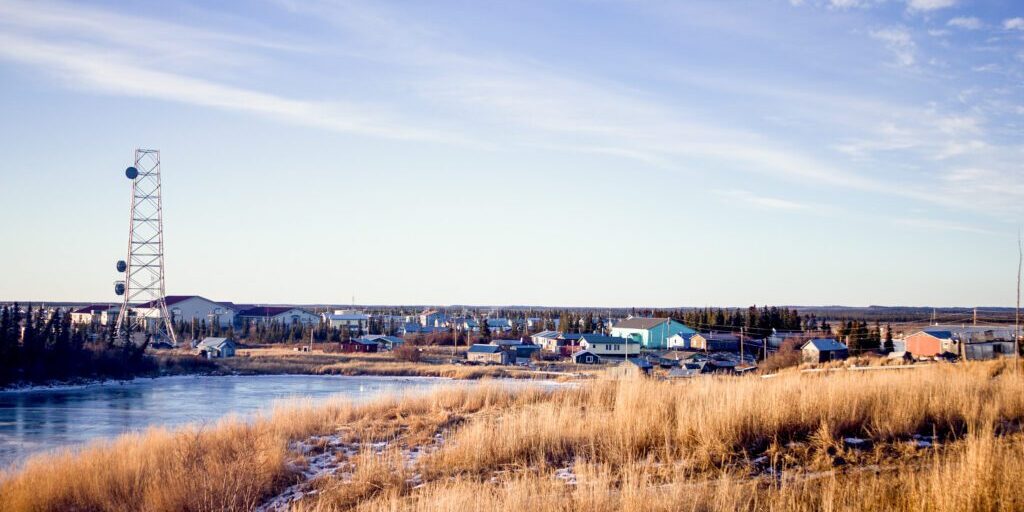In late 2016, a fire that damaged a water treatment plant in the village of Emmonak (ee-MON-ick) threatened a freeze-up of the town’s pipes. Volunteer Tyler Stup reported that residents were urged to conserve water and to use “honey buckets” rather than toilets. This effort was needed to refill the village’s isolated water supply and to repair the damage.
The main water line for the village of Stebbins froze in late November. The backup solution was to haul water from a lake five miles away. However, the haul trucks were in disrepair and first needed to be fixed. Volunteer Davis Hovey reported that the village was at risk to completely run out of water by the New Year. Residents were forced to travel 13 miles (mostly by snowmachine) to the nearby village of St. Michael to shower or do laundry.
Meanwhile, a new, 100-foot microwave tower looms over the skyline of the small village of Noorvik (NORE-vick), population 650, raising hopes of faster internet speeds. Volunteers Lauren Frost and Tyler Stup reported how even modest bumps in connectivity would offer crucially needed improvements in “telelearning” for local schools and “telemedicine” for local clinics. Villagers pay many times more for internet speeds that are a fraction of what is available in cities like Anchorage or the Lower 48.
These are just a few examples of how Western Alaska’s lack of infrastructure and reliable basic services affect KNOM listeners. It’s been a frequent subject of recent news stories. This year’s volunteer crew is seeing, first-hand, the ripple effect of the lack of basic support services that many take for granted. They travel free, thanks to a sponsorship agreement with Bering Air to provide free transport to the sources of stories like these. And, of course, their stories make it to air thanks to you.





